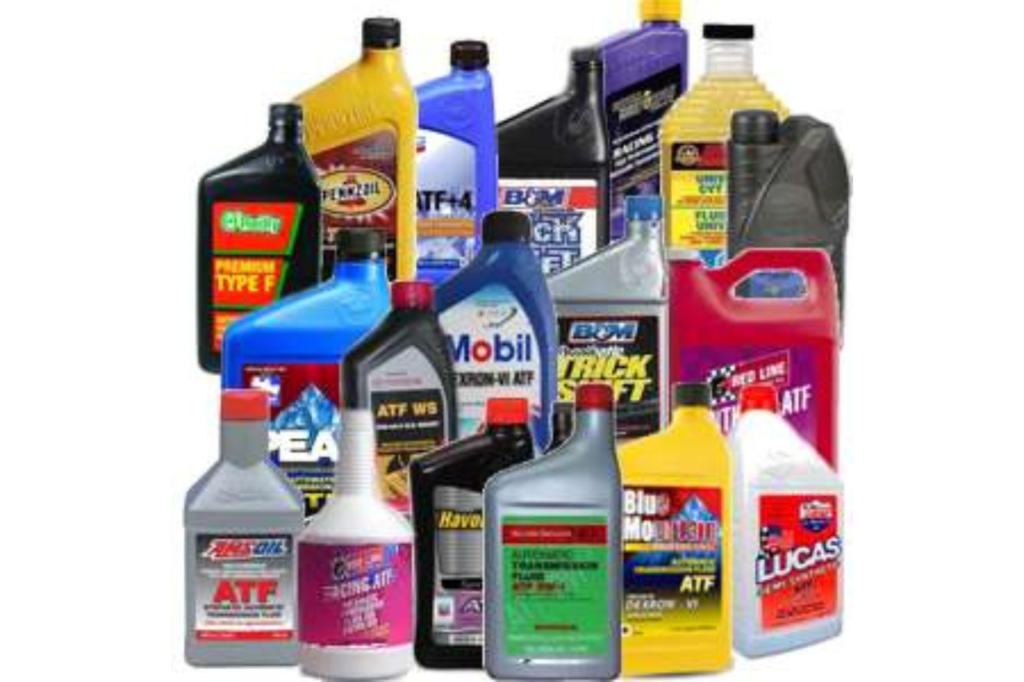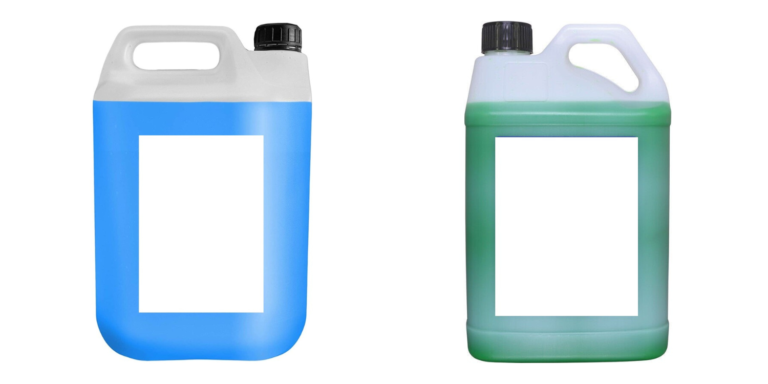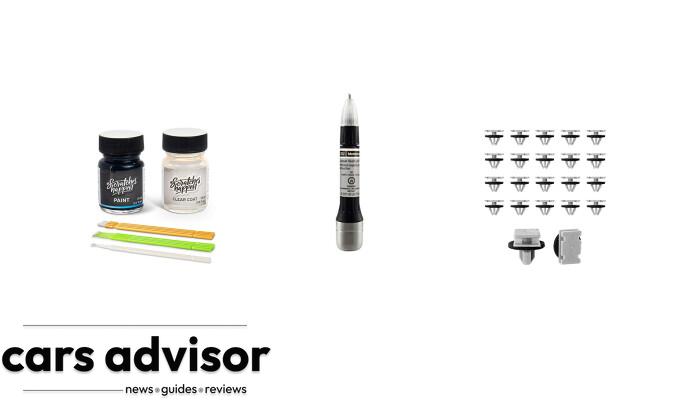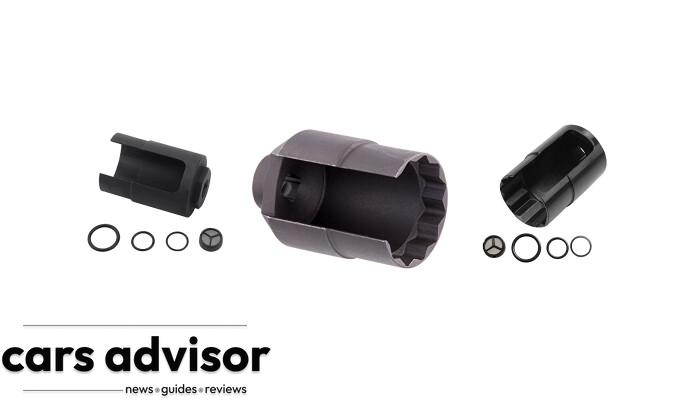If you’ve ever pondered the question, “Is transmission fluid flammable?” this blog post is for you!
As a vital component of your vehicle’s performance, understanding transmission fluid’s properties and potential hazards is crucial for safety and car maintenance.
In this article, we’ll dive deep into what makes up the transmission fluid, explore its flammability in various situations, and discuss proper handling and storage techniques to prevent accidents.
Curious about the truth behind the flammability of transmission fluid? Keep reading to gain valuable insights on this often misunderstood automotive substance.
Understanding Transmission Fluid
Transmission fluid is a crucial component in automatic transmissions and serves various functions, including lubricating gears, cooling the transmission system, and maintaining hydraulic pressure for shifting.
Composition And Functions
Transmission fluid plays a crucial role in the overall functioning of a vehicle’s transmission system. Composed primarily of base oils and additives, its primary function is lubricating and cooling the internal components and providing the hydraulic pressure needed for gear changes.
The additives in transmission fluid enhance frictional properties, oxidation stability, and detergents that help keep metal surfaces clean.
Various vehicles require specific formulations of transmission fluid based on their unique needs.

For example, automatic transmission fluid (ATF) designed for newer vehicles tends to be lower viscosity – meaning it flows more easily at low temperatures – ensuring smoother shifting even during cold weather conditions.
On the other hand, manual transmissions typically use higher viscosity fluids or gear oil, providing better protection against wear due to constant gear meshing inside the gearbox.
It is important to use the appropriate type of fluid designated by your car manufacturer for optimal performance.
In doing so, you maintain an efficient operation and prolong your vehicle’s lifespan by preventing unwanted damage caused by incorrect or poor-quality fluids.
Types Of Transmission Fluid
Transmission fluid is a vital component in ensuring optimal performance and longevity of your vehicle’s transmission system.

Here are some types of transmission fluid commonly used:
- Automatic Transmission Fluid (ATF)
ATF is the most commonly used type of transmission fluid today, specifically designed for automatic transmissions. Its thin consistency makes it easy to flow through the intricate network of valves and gears in an automatic transmission system.
- Manual Transmission Fluid
Manual transmission fluid is typically more viscous than ATF, which helps protect the gears in manual transmissions from wear and tear caused by high torque loads.
- Synthetic Transmission Fluid
Synthetic transmission fluids are high-performance lubricants that offer better protection against friction, heat and wear than conventional fluids. They are also designed to last longer between oil changes, reducing maintenance costs over time.
- CVT Fluid
CVT (Continuously Variable Transmission) fluid is designed to meet the unique requirements of continuously variable transmissions that use belts instead of traditional gears to transmit power.
- Dual Clutch Transmission Fluid
Dual clutch transmission fluid is formulated specifically for vehicles with dual-clutch transmissions, which use two separate clutches for odd and even gears.
Regardless of the type of transmission fluid used in your vehicle, it is crucial to follow the manufacturer’s recommendations for proper maintenance and replacement intervals to ensure optimal performance and prevent damage or failure of the transmission system.
Transmission Fluid Flammable
Transmission fluid is not classified as a flammable liquid, but it can still be highly combustible and pose a fire hazard if not handled and stored properly.
Keep reading to learn more about the potential risks of transmission fluid and how to stay safe when dealing with auto fluids!
Definition Of Combustible Liquids
Combustible liquids are any liquid with a flashpoint above 100 degrees Fahrenheit but below 200 degrees Fahrenheit.
Flashpoint refers to the temperature at which a substance gives off enough vapour to ignite in air when exposed to an ignition source. Examples of combustible liquids include diesel fuel, motor oil, and transmission fluid.
It’s important to note that just because a liquid is considered “combustible” doesn’t necessarily mean it will catch fire easily.
Rather, the label indicates that these liquids pose a fire risk if they come into contact with heat or sparks. Handling and storing these fluids requires special precautions and safety measures.
In addition to transmission fluid, other combustible automotive fluids include brake fluid, gear oil, and engine oil. Proper storage and handling can significantly reduce the risk of accidents related to combustible liquids in auto maintenance settings.
Flashpoints And Ignition Temperatures
Understanding the flashpoints and ignition temperatures of transmission fluid is crucial in determining its flammability and potential fire hazards.
The table below provides information on the flashpoints and ignition temperatures of common types of transmission fluid.
| Type of Transmission Fluid | Flashpoint | Ignition Temperature |
|---|---|---|
| Automatic Transmission Fluid (ATF) | Around 300°F (149°C) | Varies depending on the composition |
| Manual Transmission Fluid (MTF) | Around 350°F (177°C) | Varies depending on the composition |
| Continuously Variable Transmission (CVT) Fluid | Around 320°F (160°C) | Varies depending on the composition |
| Dual Clutch Transmission (DCT) Fluid | Around 330°F (166°C) | Varies depending on the composition |
The flashpoints of transmission fluid are generally above 199.4°F (93°C), classifying them as combustible liquids rather than flammable ones.
However, when the transmission fluid is heated beyond its autoignition temperature, it can catch fire if ignited with a suitable ignition material.
Handling and storing transmission fluid properly is essential to prevent fire hazards and ensure safety.
Examples Of Flammable Transmission Fluids
Many types of transmission fluid are not necessarily flammable, but they can still be combustible under certain conditions.
However, some specific examples of transmission fluids are flammable in certain situations.
Here are a few notable examples:
- Type F Automatic Transmission Fluid – This automatic transmission fluid is particularly flammable when it comes into contact with hot surfaces. Some studies have found that Type F ATF can ignite at temperatures as low as 385 degrees Fahrenheit.
- Dexron III/Mercon Automatic Transmission Fluid – While this type of ATF may not be as flammable as Type F, it has still been shown to pose a fire risk if exposed to high temperatures or sparks.
- Synthetic Automatic Transmission Fluid – These fluids are often touted for superior performance and longevity. Still, they can also be flammable if they come into contact with an ignition source.
- Power Steering Fluid – Although power steering fluid is not technically a transmission fluid type, it shares many similarities with ATF and can sometimes be used interchangeably. Like other auto fluids, power steering fluid can ignite if exposed to extreme temperatures or sparks.
Overall, it’s important to remember that while some transmission fluids may not be explicitly classified as “flammable,” they should still be treated with care and respect to avoid potential fire hazards.
Proper handling and storage techniques should always be followed when dealing with combustible liquid.
Is Hydrostatic Transmission Fluid Flammable?
Hydrostatic transmission fluid checking is crucial to ensure safety. When it comes to flammability, it is significant to note that not all hydrostatic transmission fluids are flammable. However, some may pose a fire risk. Therefore, it is important to read the manufacturer’s recommendations and guidelines to determine the flammability level of the specific fluid being used. Understanding the properties of hydrostatic transmission fluids can prevent accidents and promote an overall safer environment.
Safety Precautions For Handling And Storage
Proper transmission fluid handling and storage is critical to reduce the risk of fire hazards, skin burns, and environmental damage. Read on to learn about essential safety precautions for working with auto fluids.
Proper Handling And Storage
Handling and storing transmission fluid properly is important to ensure safety and prevent environmental damage.
Here are some guidelines for the proper handling and storage of transmission fluid:
- Always wear appropriate personal protective equipment, such as gloves and safety goggles when handling transmission fluid.
- Store transmission fluid in a cool, dry place away from heat sources and ignition materials.
- Keep transmission fluid containers tightly closed when not in use to prevent evaporation or spills.
- Do not mix different types of transmission fluids.
- Use designated containers for used or contaminated transmission fluid, and dispose of them according to local regulations.
- Follow workplace safety protocols when handling or storing transmission fluids, including proper ventilation, fire suppression equipment, and emergency procedures.
- In case of a spill or leak, contain the affected area with absorbent materials such as sand or pads, then clean up promptly and dispose of the waste properly.
Following these guidelines for properly handling and storing transmission fluid can help minimize the risk of fire hazards and protect yourself and the environment from potential harm.
Workplace Safety Protocols
Workplace safety protocols are essential when handling transmission fluid.
Here are some of the safety protocols that should be followed:
- Always wear gloves and eye protection when working with transmission fluid.
- Make sure the work area is well-ventilated to prevent exposure to harmful vapours.
- Keep flammable materials away from the work area, including open flames, spark-producing equipment, and other combustible liquids.
- Use caution when storing and disposing of used transmission fluid properly. Label all containers clearly with hazard information.
- If there is any spill or leak, clean it up immediately using absorbent materials and dispose of it safely.
- Always follow the manufacturer’s recommendations for handling and disposal of transmission fluid.
- Train employees on proper handling techniques, including safe storage and disposal methods.
- Have a fire extinguisher nearby in case of an emergency involving flammable liquids.
By following these workplace safety protocols, you can reduce the risk of transmission fluid accidents and ensure a safe working environment for everyone involved in car maintenance or engine repair activities.
Environmental Impact And Disposal
Proper disposal of transmission fluid is crucial for environmental protection. In most states, it is illegal to dispose of it down the drain or in any other way that may harm the environment.
Transmission fluid contaminates soil and water and can be toxic to plants and animals.
To dispose of transmission fluid properly, take it to a recycling centre or drop-off location that accepts hazardous materials.
You can also contact your local government’s waste management department for advice on safely disposing of used transmission fluid.
In addition to proper disposal, reducing the amount of waste produced by using high-quality lubricants and replacing fluids less frequently can greatly reduce environmental impact.
It’s important to remember that even small actions, such as disposing of auto fluids properly, can significantly impact the environment.
Is Transmission Fluid Flammable Or Not?
While transmission fluid may not be classified as a flammable liquid, it can still pose a fire hazard if not handled and stored properly. Read on to learn about the importance of proper handling and disposal of transmission fluids in ensuring safety and environmental protection.
While Transmission Fluid May Not Be Classified As A Flammable Liquid, It Can Still Pose A Fire Hazard If Not Handled And Stored Properly. Ensuring Proper Handling And Disposal Is Crucial To Ensuring Safety And Environmental Protection.
Even though transmission fluid is not directly classified as flammable, it should be handled with caution.
The fluid’s flashpoint is around 300 degrees Fahrenheit and can ignite when exposed to a suitable ignition source or overheated beyond its autoignition temperature. Additionally, automatic transmission fluid is flammable and will catch fire if hot enough.
Proper transmission fluid handling and storage ensure safety and prevent environmental damage.
Workplace safety protocols must be followed when handling combustible liquids like automatic transmission fluid, brake fluids, gear oil, and engine oil, among others, found in the engine compartment.
It’s important to properly dispose of used transmission fluids through certified recycling programs that ensure they do not pollute water bodies or soil.
Conclusion: Importance Of Proper Handling And Disposal Of Transmission Fluids In Ensuring Safety And Environmental Protection
In conclusion, while transmission fluid is not directly flammable, it is still a combustible liquid that can pose a serious fire hazard if not handled and stored properly.
Understanding the potential risks associated with transmission fluid and taking necessary safety precautions when working with this hazardous material is crucial.
Proper handling and disposal are key in ensuring workplace safety and environmental protection. Remember to follow the industry-standard protocols for storing, handling, and disposing of all auto fluids, including gear oil, brake fluid, power steering fluid, lubricants – anything you use for your car or vehicle’s maintenance. So stay safe out there on the road!






















